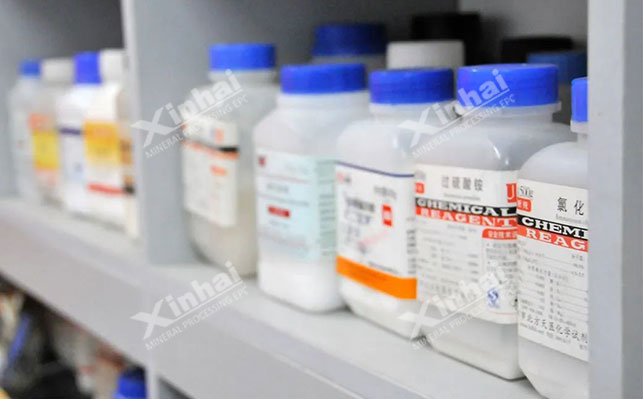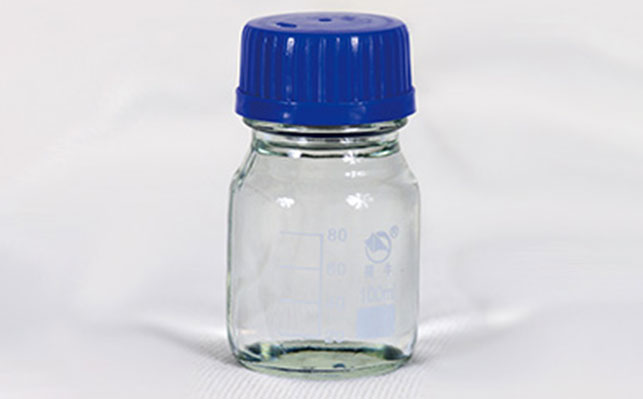
15311826613
Click to add WeChatFlotation is one of the commonly used ore dressing technologies in gold ore dressing plants. It is suitable for the dressing of various complex gold ores, especially in the treatment of difficult-to-select gold ores such as fine-grained intercalation and polymetallic paragenesis. In the flotation process, reagents are the key. The hydrophobicity and hydrophilicity of the mineral surface are changed by adding reagents to separate them. Among them, frothers, as the key medium for constructing the gas-liquid interface, directly affect the generation and stability of bubbles and the fluidity of the foam layer, and then determine the core indicators such as gold recovery rate and concentrate grade. This article will introduce the commonly used frothers in gold mines.

Frothers are a type of surfactant that can reduce the surface tension of liquids, promote bubble formation and maintain foam stability. Its molecular structure is usually composed of hydrophilic and hydrophobic groups. Unlike collectors that act on the mineral surface through chemical adsorption or physical adsorption, frothers are mainly arranged in a directional manner at the gas-liquid interface, reducing surface energy and promoting bubble generation. Their functions are as follows:
Reducing surface tension: frother molecules adsorb at the gas-liquid interface, reducing the surface tension of water (from about 72 mN/m to 30-50 mN/m), making it easier for air to disperse into tiny bubbles, increasing the probability of collision between bubbles and gold minerals.
Stabilizing bubble structure: frother molecules form a directional adsorption layer on the bubble surface, forming an elastic film, preventing bubble merger and rupture, and extending the life of the foam. At the same time, by adjusting the surface charge of the bubbles, reducing the aggregation of bubbles, and maintaining the stability of the foam layer.
Adjusting the characteristics of the foam layer: Suitable frothers can adjust the thickness, fluidity and viscosity of the foam layer. Generally, agents with low foaming ability produce thin and brittle foam, which is conducive to the rapid discharge of gangue minerals; high-stability frothers form thick and sticky foam layers, which are suitable for enriching fine-grained gold minerals.
In gold ore dressing plants, common frothers include alcohols, ether alcohols, natural oils and synthetic polymers. The differences in their chemical structures determine the differences in foaming performance, selectivity and environmental adaptability.
Methyl isobutyl carbinol: (MIBC) is a synthetic alcohol frother, one of the commonly used agents in gold ore dressing plants, with the characteristics of brittle foam, good fluidity and strong selectivity. The hydroxyl groups in its molecular structure provide hydrophilicity, and the alkyl chains give hydrophobicity, which performs well in the flotation of fine-grained gold and sulfide ores. When processing gold-bearing pyrite ores, it can effectively reduce the entrainment of gangue minerals and increase the grade of gold concentrate by 15%-20%.
2-Ethylhexanol: The foam formed by this frother is relatively stable and is suitable for alkaline (pH 9-11) flotation environments, especially in the flotation of oxidized ores and high-mud gold ores. Its long carbon chain structure enhances the stability of foam, and has a significant inhibitory effect on clay minerals, which can reduce the interference of ore mud on gold mineral flotation.
Polyethylene glycol ether: It is a non-ionic foaming agent. By adjusting the degree of polymerization and molecular structure, different foaming properties can be customized. When treating copper-gold ores and polymetallic sulfide ores, the stable foam layer formed by it can effectively take into account the recovery of multiple metals, and has strong adaptability to complex water quality (such as high calcium and magnesium ions), which can reduce the consumption of reagents by 10%-15%.

Pine alcohol is a common natural foaming agent. Its main component is terpene alcohol compounds. It has a wide source and low cost. It is suitable for the flotation of traditional quartz vein gold mines. However, the foam formed by pine alcohol is relatively sticky and easy to carry gangue, resulting in a lower concentrate grade. There are also problems such as poor batch stability and easy oxidation during storage, and it is gradually replaced by synthetic foaming agents.
Such as Aerofroth™, Oreprep™ and other series are common synthetic frothers, which are mainly designed through molecular structure and have high selectivity and customization characteristics. When treating carbonaceous gold ores, Aerofroth™ 533 can effectively inhibit the adsorption interference of carbonaceous materials on gold, and increase the gold recovery rate by 8%-12%; in low-temperature (<10℃) flotation environment, some synthetic frothers can still maintain stable performance, expanding flotation operation conditions.
Although frothers are used for gold flotation, their selection criteria and dosage are not fixed. The symbiotic relationship and occurrence state of gold are different, and the flotation process selected is also different, so the type of frother required is also different.
In sulfide gold mines, gold often exists in the form of fine particles or symbiotic forms. The flotation of this type of ore needs to give priority to suppressing sulfide minerals. MIBC can reduce the floating of gangue such as pyrite due to its high selectivity; polyethylene glycol ether foaming agents can stabilize the foam layer to ensure the effective recovery of fine gold.
Oxidized gold is often associated with or encapsulated in limonite and clay. Because the ore is easy to mud, flotation is difficult. The stable foam that 2-ethylhexanol can form under alkaline conditions can reduce the encapsulation of gold minerals by ore mud; synthetic ether alcohol foaming agents improve the separation efficiency of gold and gangue through anti-mudification properties.
Gold particles in quartz vein gold mines are relatively coarse, and the requirements for foam stability are moderate. Pine oil is still used due to its cost advantage. It can optimize foam brittleness and reduce gangue entrainment with low dosage MIBC; and new synthetic foaming agents can further improve gold recovery and grade by accurately controlling foam fluidity.
Organic carbon in carbonaceous gold ores easily adsorbs gold-cyanide complexes or collectors, interfering with flotation. Therefore, highly selective synthetic frother Aerofrost™533 can be used to inhibit the floating of carbonaceous materials through special molecular structures, while enhancing the adhesion of gold minerals and bubbles.
When treating complex ores such as copper-gold ores, lead-zinc-gold ores, polyethylene glycol ether frothers are often used. This type of agent has the performance of stabilizing foams, which can balance the flotation requirements of various metal minerals and avoid metal losses caused by unstable foams.
The above is an introduction to the types of frothers commonly used in gold concentrators and which frothers are commonly used for different types of gold. Nowadays, as gold resources become increasingly poor, fine and mixed, different types of gold mines have put forward higher requirements for the selectivity and adaptability of frothers. In-depth research on the mechanism of action, type characteristics and application optimization strategies of frothers will not only help improve the flotation efficiency of gold mines and reduce production costs, but also be the key to achieving efficient utilization of gold resources and green ore dressing.